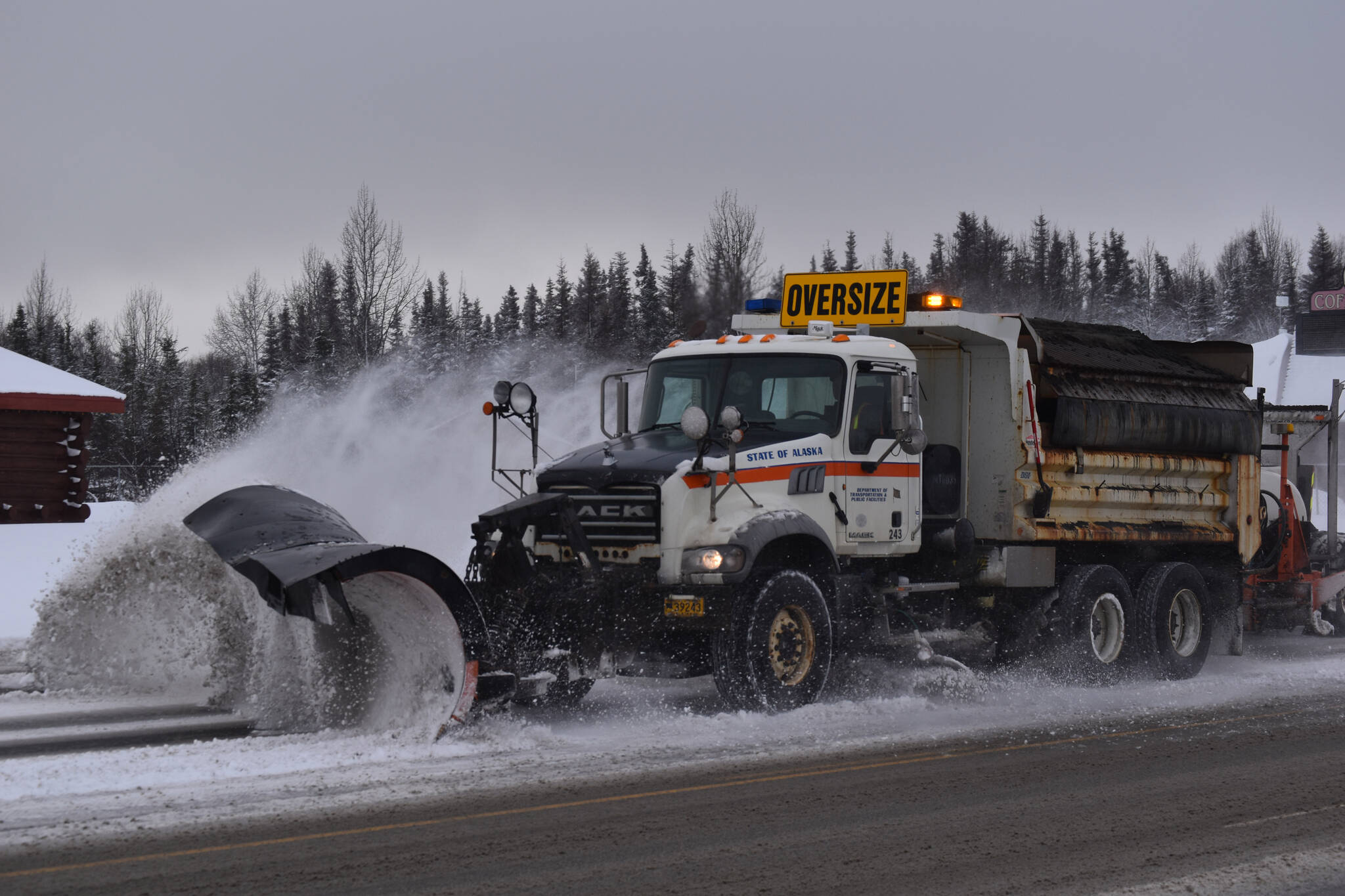A little over a month after representatives from the Alaska Department of Transportation and Public Facilities met with residents on the central Kenai Peninsula to discuss the use of salt brine on local roads, the department has more clearly articulated which roads will and will not receive brine treatment this winter.
The department took to Facebook last week to explain that the Kenai Peninsula’s Priority 1 and 2 roads will continue to be treated with brine, but that Priority 3 and 4 roads will be treated with sand and solid salt. The department said its goal is to reduce brine use overall in the region by 40%, but that brine use will continue on high speed roads for safety and service quality purposes.
“We’re not able to eliminate the use of brine on these roads this season while maintaining an appropriate level of service and safety with current equipment and staffing,” the department wrote.
Priority Level 1 roads — the Sterling and Seward highways — are those roads on which a large number of vehicles travel at high speeds.
Priority Level 2 roads are those routes of lesser priority as determined by traffic volume and speeds. Second priority roads include the Kenai Spur Highway and Kalifornsky Beach Road on the central peninsula, East Hill Road in Homer and Nash Road in Seward.
Priority Level 3 roads are major local roads usually found in urban communities. Third priority roads include Funny River Road and Beaver Loop Road on the central peninsula, East End Road and Diamond Ridge Road in Homer and Herman Leirer Road in Seward.
Priority Level 4 roads are those that provide residential or recreational access. Fourth priority roads include Big Eddy Road and Poppy Lane East on the central peninsula, Skyline Drive East and Ohlson Mountain Road in Homer and Airport Road in Seward.
Justin Shelby, the department’s administrative operations manager for the central region, said last week that brine will still be used on the Kenai Spur Highway north of Milepost 12.5, near Playa Azul in Kenai.
The strategy of limiting brine use to first and second priority roads, Shelby said, will be used for the duration of the current winter season, after which the department will evaluate its effectiveness.
Changes to the way the Department of Transportation treats winter roads on the central peninsula came after widespread pushback from residents to the use of salt brine. Roughly 200 people attended an October town hall event hosted by the Kenai Peninsula Borough to discuss their concerns with department staff, including Commissioner Ryan Anderson.
The top concerns voiced by attendees were the corrosive effects they said brine has on vehicles, which leads to expensive repairs for motorists and threats to public safety. A petition calling for the cessation of brine use, as of Oct. 11, had received more than 5,000 signatures and the Kenai Peninsula Borough Assembly has formally called on the department to end brine use.
Up-to-date information about road conditions in Alaska can be found on the Department of Transportation and Public Facilities’ Alaska 511 application at 511.alaska.gov.
Reach reporter Ashlyn O’Hara at ashlyn.ohara@peninsulaclarion.com.


